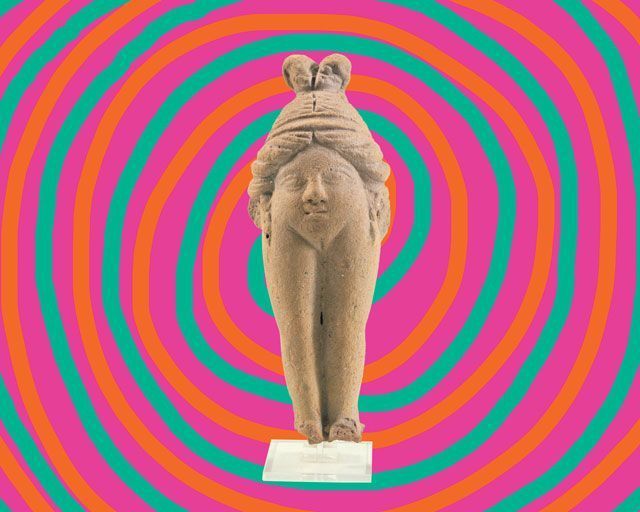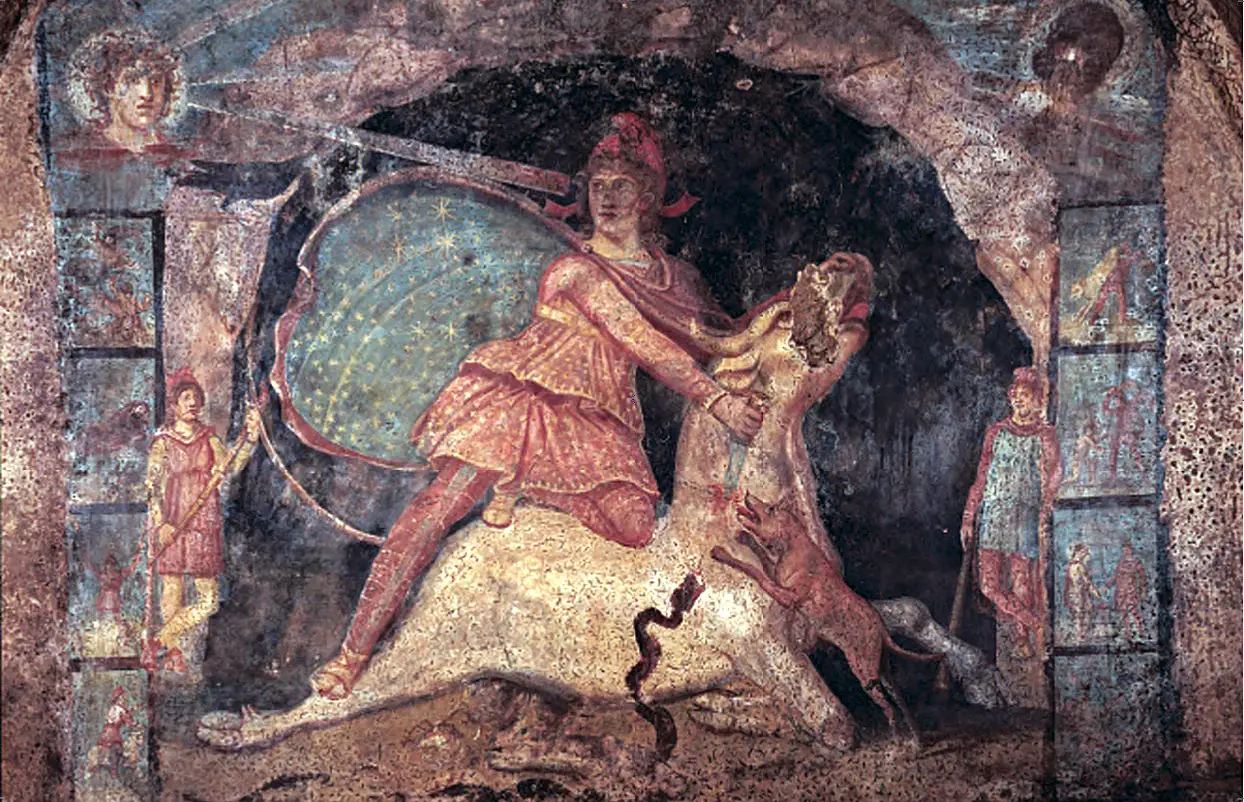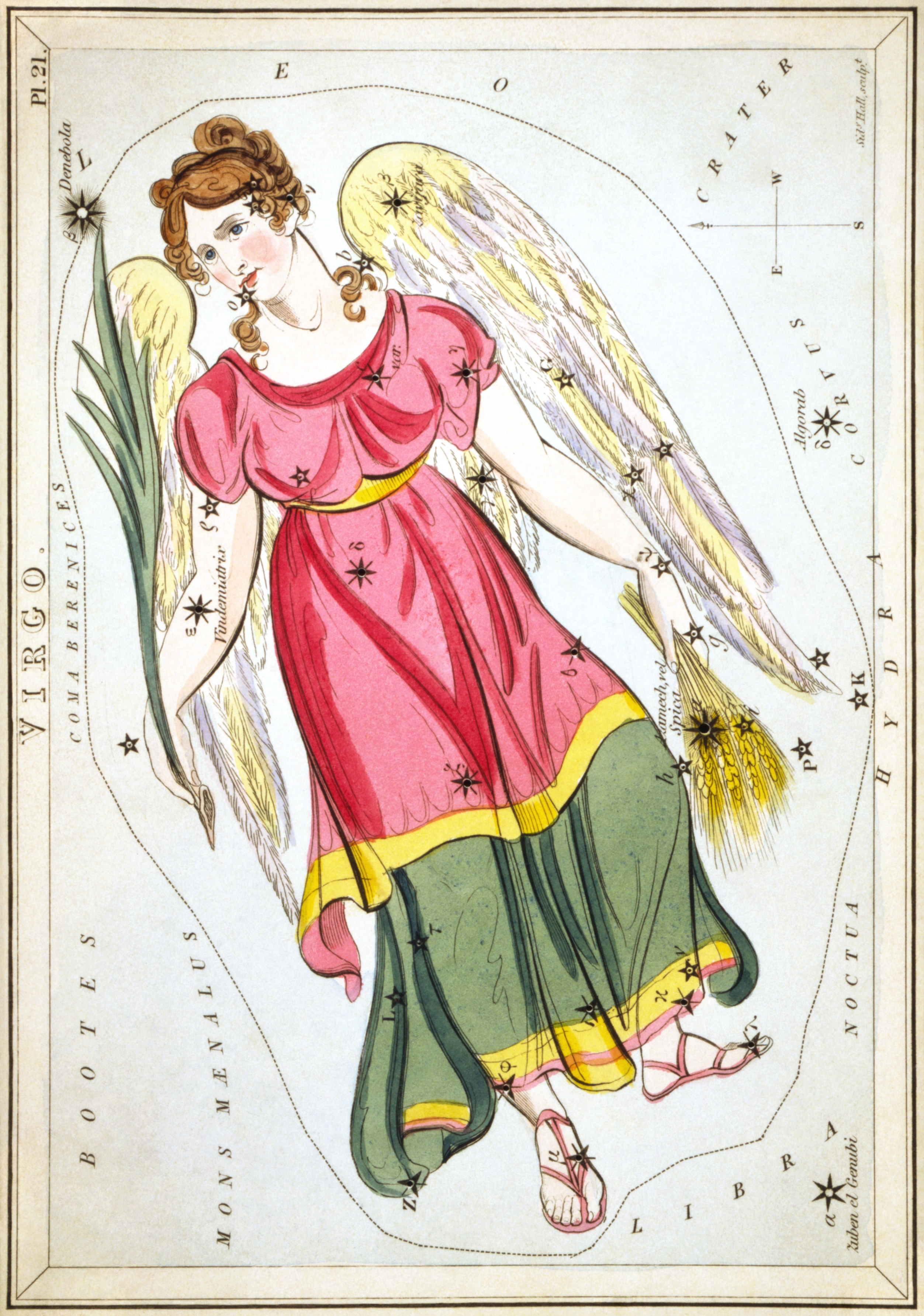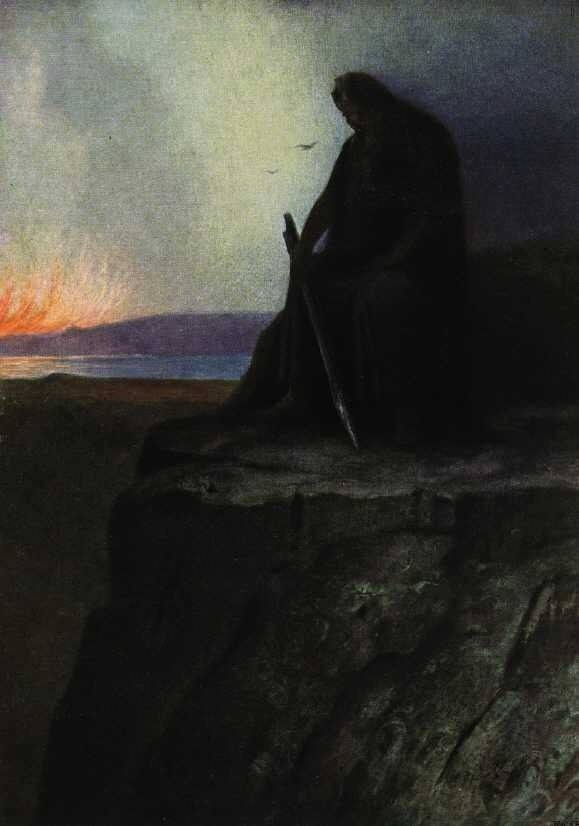Tag: Eleusinian mysteries
The symbolism of the pomegranate
Let's go to the discovery of the symbolism of the pomegranate in the Mediterranean ecumene between myth, initiation, mysticism and literature: from the Phrygian myth of Cybele and Attis to the Eleusinian Mysteries and the imprisonment of Persephone in Hades, from the symbolism of the biblical Fall to the architectural and Masonic one of the columns of the Jachin and Boaz temple.
The witches of Alicudi: notes of Aeolian folklore
In the popular Aeolian tradition the name of Alicudi has always been associated with fantastic and mysterious stories: 'mahare'(witches) who fly to Palermo or even Africa, human beings who turn into animals, fishermen who know magic formulas to' cut 'the sea trumpets, fortune tellers, oracles and other enigmatic presences.
The Puer and the Kore for Károly Kerényi: uncertainty, origin and foundation
From the analysis of the two mythological figures of Puer Aeternus and Kore in the demetric mysteries of Eleusis, in the studies of the Hungarian historian of religions Károly Kerényi and in the comments on these by Carl Gustav Jung, the importance of the "original" and "founding" character emerges "Of the Greek myth, the enigmatic link between being and non-being, the one between life, love and death that allow us to express through symbolic relationships a cosmic process in which man's existence is close to reality.
Terence McKenna and the "food of the gods"
Exactly 20 years ago, on April 3, 2000, Terence McKenna took off towards Hyperspace: for the occasion we review his book "Food of the Gods", recently republished in the Italian translation by Piano B editions, focused on the relationship of humanity through the millennia with the so-called "master plants", but which also critically dwells on the relationship of dependence of modern man with various drugs, legal and illegal, among which McKenna also includes television.
Towards “TimeWave Zero”: Psychedelia and Eschatology in Terence McKenna
In addition to being one of the "prophets" of the psychedelic Counterculture of the second half of the last century, Terence McKenna was able to build, in the course of thirty years of studies and experiments, a real eschatological system for the Third Millennium, in view of final explosion, based on the recovery of shamanic practices, on a new interpretation of the Sacred as "Mysterium Tremendum" and on the vision, beyond the ordinary dichotomy between life and death, of what he called an "Ecology of Souls".
The religions of mystery: soteriology of the Mithraic cult and of Attis / Cybele
(image on the side: affresco representing Mithra killing the bull, XNUMXnd cent. AD, Marino, Italy)
NIn the 50s, the Gnostic documents of Nag Hammadi, found immediately after the war in Egypt, made their entry into the academic world, and the need arose in the field of studies for a reflection on the material available and a rethinking of the categories into which they fell. the so-called mystery cults. The years between the 30s and 40s had already brought new materials and new research hypotheses: studies on pattern or mythical-ritual model inaugurated in England, which still felt the influence of Frazerian comparativism, "by now they were putting the theme of mystery religions in a broader perspective to consider them, one by one, in their ancient roots of national and ethnic religions - Crete, Egypt, Anatolia and the rest of anterior Asia, overcoming the limitation to mystical and soteriological cults of the Hellenistic-Roman age and in particular those relating to divinities of oriental origin»Such as Mithra (Persia), Isis and Osiris (Egypt, Rome), Cybele and Attis (Anatolia), Aphrodite / Astarte and Adonis (Phenicia, Greece) [From: U. Bianchi, The study of mystery religionsin The soteriology of oriental cults in the Roman Empire, Proceedings of the International Colloquium, Rome 24-28 Sept. 1979].
The astronomical significance of the Golden Age: Astrea and the "fall" of Phaeton
di Andrew Casella
cover: Sidney Hall, representation of the Virgo constellation, taken from "Urania's Mirror", 1825)
(follows from Stellar symbolism and solar symbolism)
All the peoples of the world sang of a mythical "first time" of abundance, in which the gods walked the earth and all things were in harmony. The myth of the Golden Age fascinated poets from remote antiquity to the times of the Renaissance. Basically, it was believed to be a time of material wonders, in which the bodily well-being of men was guaranteed by the natural and infinite flow of milk and honey. But are things really as the poets sang? What was the Golden Age really? The poets themselves, on the other hand, have preserved (consciously or not) some revelatory clues to the mystery, which refer, once again, to the celestial vault.
Cernunno, Odin, Dionysus and other deities of the 'Winter Sun'
di Marco Maculotti
cover: Hermann Hendrich, "Wotan", 1913
[follows from: Cosmic cycles and time regeneration: immolation rites of the 'King of the Old Year'].
In the previous publication we had the opportunity to analyze the ritual complex, recognizable everywhere among the ancient Indo-European populations, centered on theimmolation (real or symbolic) of the "King of the Old Year" (eg. Roman Saturnalia), as a symbolic representation of the "Dying Year" that must be sacrificed to ensure that the Cosmos (= the order of things), reinvigorated by this ceremonial action, grants the regeneration of Time and of the 'World' (in the Pythagorean meaning of Kosmos like interconnected unit) in the new year to come; year which, in this sense, becomes a micro-representation of the Aeon and, therefore, of the entire cyclical nature of the Cosmos. Let's now proceed toanalysis of some divinities intimately connected with the "solstitial crisis", to the point of rising to mythical representatives of the "Winter Sun" and, in full, of the "King of the Waning Year": Cernunno, the 'horned god' par excellence, as far as the Celtic area is concerned; Odin and the 'wild hunt' for the Scandinavian one and Dionysus for the Mediterranean area.









